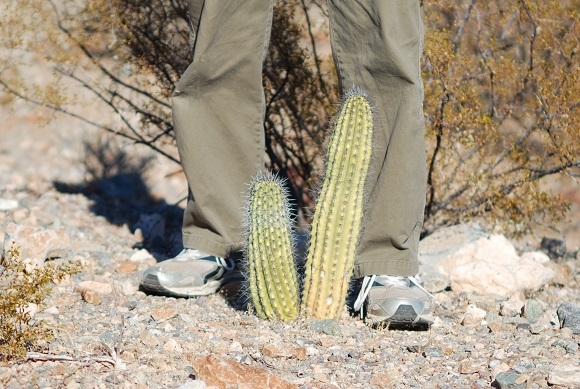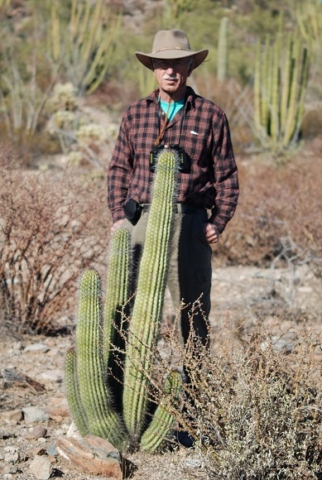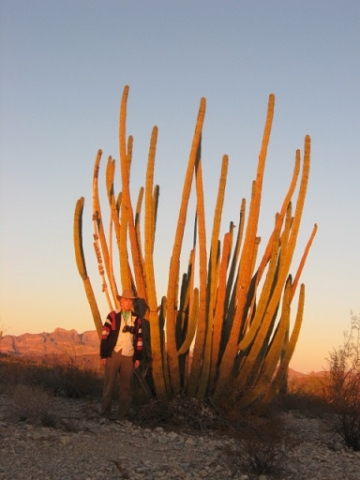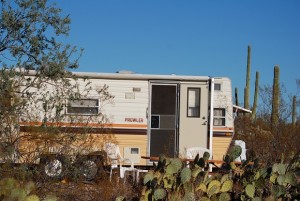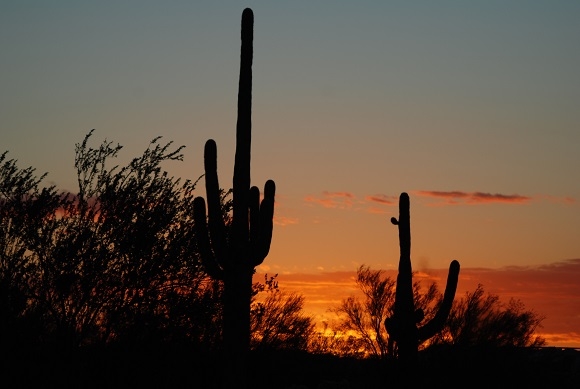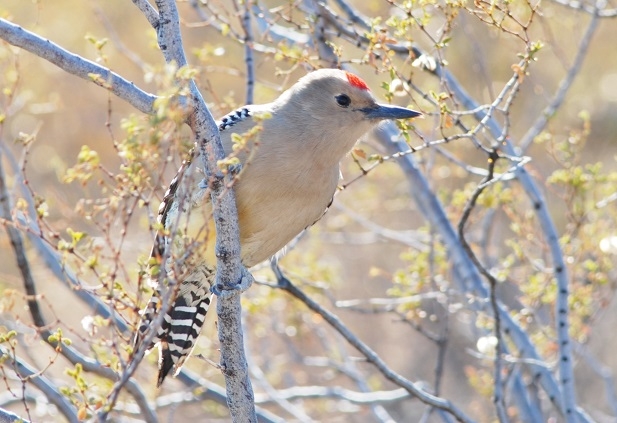
Updated July 2022
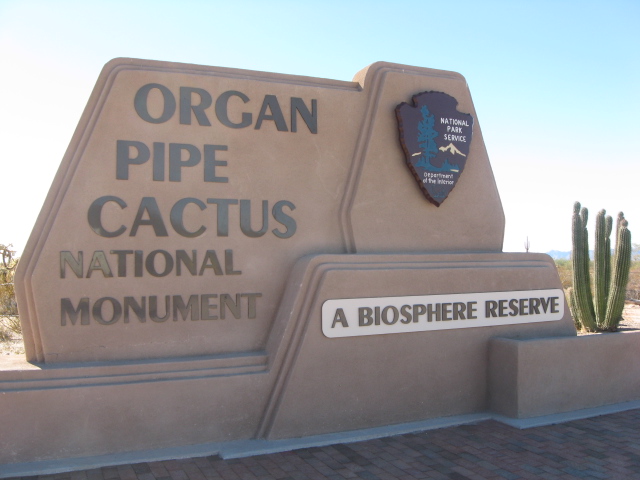
What is the Organ Pipe Cactus? It is both a plant and the name of a park. Organ Pipe Cactus National Monument is a park in southern Arizona on the border with Mexico. The park was created, in 1937, to protect the Organ Pipe Cactus. It is the only place in the United States where this plant grows. The Organ Pipe Cactus is more common south of the border in Mexico. This area is part of the Sonoran Desert, which is mainly in Arizona but also in northwest Mexico, including the Baja California Peninsula.
A Biosphere Reserve
Organ Pipe Cactus National Monument is a United Nations Biosphere Reserve. Biosphere Reserves are unique areas worldwide that are protected as pristine examples of various habitats. This one represents the Sonoran Desert. The park is 1,338 square kilometres (330,689 acres). The monument contains 28 species of cactus, including the giant Organ Pipe and Saguaro.
The Organ Pipe Cactus
The Organ Pipe Cactus is a magnificent plant. It grows only in rocky deserts. Not in sand. It is named because it resembles a large pipe organ seen in many churches. They start as a single stem. They can grow between 16 feet (4.9 m) and 23 to 26 feet (7.0 to 7.9 metres). After the first few years, other stems branch out from the base. It can reach a width of 12 feet (3.7m). It is very slow-growing and takes about 150 years to reach maturity. Older plants produce a white flower that opens only during the night and is pollinated by bats.
These three photos show the Organ Pipe cactus at 25, 35, and 80 years of age. Click the first photo to enlarge and then scroll to the next photo.
It also produces a fruit the size of a tennis ball that tastes like watermelon. I have spent a lot of time in the American deserts but always during the Canadian winter to escape the cold and snow. I need to go there one year in the spring to see all the cacti bloom.
Organ Pipe Cactus National Monument

Organ Pipe Cactus National Monument is a little off the beaten path and not one of the most favourite parks in the USA. However, I think it is a great place and well worth the detour to spend a few days there.
The Sonoran Desert
The Sonoran desert covers southern Arizona and the Mexican States of Sonora and Baja California. One might expect a desert to be barren and sandy and boring. The Sonoran desert is anything but barren, and it is not sandy. The ground is mostly rock and dirt, not sand. The terrain is covered with many kinds of cacti, bushes, and small trees; few places are barren. A desert is defined by a lack of rain, not a lack of plants. The location and climate are just right for many plants and wildlife to thrive here. The Sonora is very lush compared to other deserts.
Other North American Deserts
The Mojave desert in California does not have nearly as many plants as the Sonora and has many sandy areas. Each of the four great North American deserts differs significantly from the others. The Sinai and Sahara Deserts in Egypt are mostly sand, which are the deserts that most people think of when they hear the word “desert”.
The Great Basin Desert is the most northerly. Therefore, plants that cannot withstand the cold do not exist there, as it gets very cold in winter with temperatures well below freezing.
The Chihuahuan desert is full of knee-high bushes and lacks the variety of plants in the Sonora. Different kinds of cactus grow in each desert, but only the Sonora has the giant Saguaro and Organ Pipe Cactus. The Joshua tree can be found only in the Mojave Desert.
When watching cowboy movies, I can tell where they were filmed by the types of plants in the area. Often I can tell that a film was not made in the area it portrays. I saw one movie about Wyatt Earp and the Gunfight at the OK Correl. I could tell by the Saguaro Cactus that the film was made in the Tucson area and not in Tombstone, which is not in the desert. Recent films about Tombstone are more accurate.
The weather in winter is about 18 in the day and 4 at night C (about 65 and 40 F), but when the wind is blowing it seems much colder. People usually think deserts are hot, but they can get well below freezing, and even snow is possible. Snow is common in the Great Basin Desert in Nevada.
There is an article about North American Deserts on this website at
https://mythatchedhut.com/north-american-deserts/
Camping at Organ Pipe Cactus National Monument
You can camp in one of the two campgrounds within the monument. The Twin Peaks Campground has 174 RV spaces and 34 for tents. Restrooms have running water and solar showers that work well on sunny days. There is a dump station but no hookups at the sites.
The Alamo Campground is more primitive and is for tents only. It has only four sites. No water is provided, and fires are not permitted.
Payment is $12 for Twin Peaks and $8 for Alamo. Pay at the visitor’s centre before occupying a site. The campground is seldom full, even on the weekends, but it is a good idea to call in advance on weekends and holidays just in case.
Update Dec 2021. Camping at Organ Pipe Cactus National Monument is now by reservation only. You cannot pay at the park. See their website at the link below or call 1-877-444-6777.
On the Border with Mexico
Just south of the park is a border crossing to the town of Sonoyta in the Mexican state of Sonora.
Spectacular Sunsets and Star Gazing
The Organ Pipe Cactus National Monument is a great place to study the night sky with countless stars. There is no light pollution from any town or city. Also, there are some spectacular sunsets and moonscapes. I think it is a beautiful place. You can fall asleep watching the silhouette of the giant saguaro cactus against the moon and listening to the howl of the coyotes and awaken to the most beautiful sunrise you have ever seen.
In the morning, you can hike and explore the desert. See how many different kinds of cacti you can find. During the afternoon, sit in a lawn chair in the shade of your trailer and see how many different species of birds you can spot. The park seems lifeless at first glance, but if you look carefully, you will see that it is teeming with wildlife, especially birds but also many other creatures.
I guess it is a matter of opinion, but I find deserts to be beautiful and fascinating. The Organ Pipe Cactus National Monument is my favourite desert park.
Organ Pipe Cactus National Monument (Government website)

